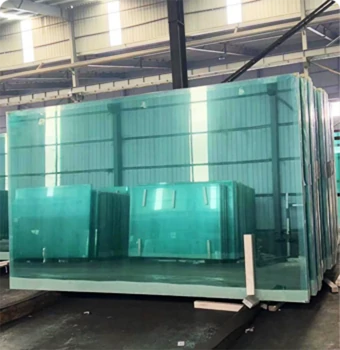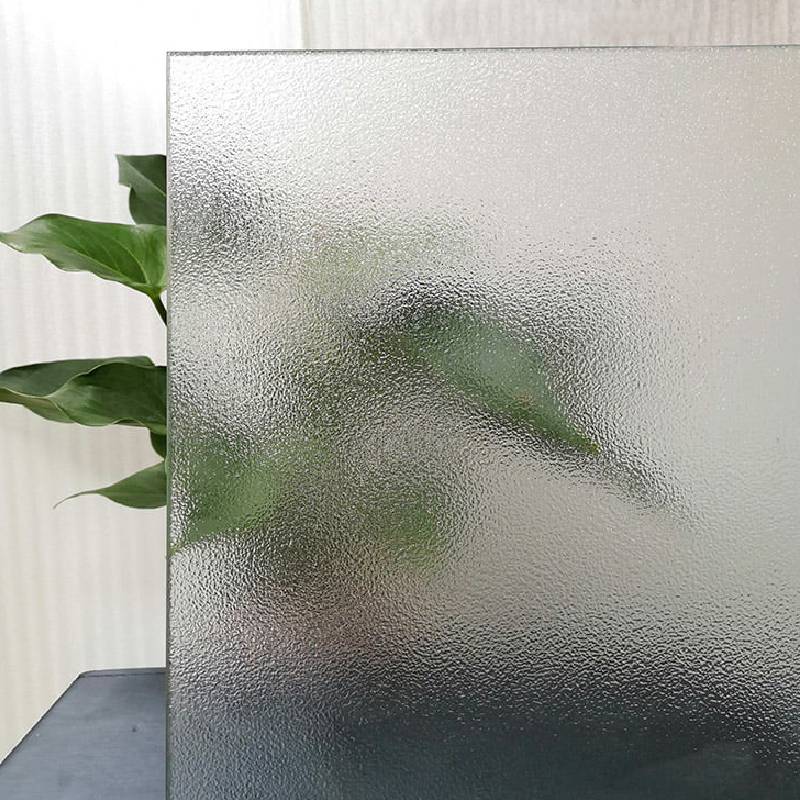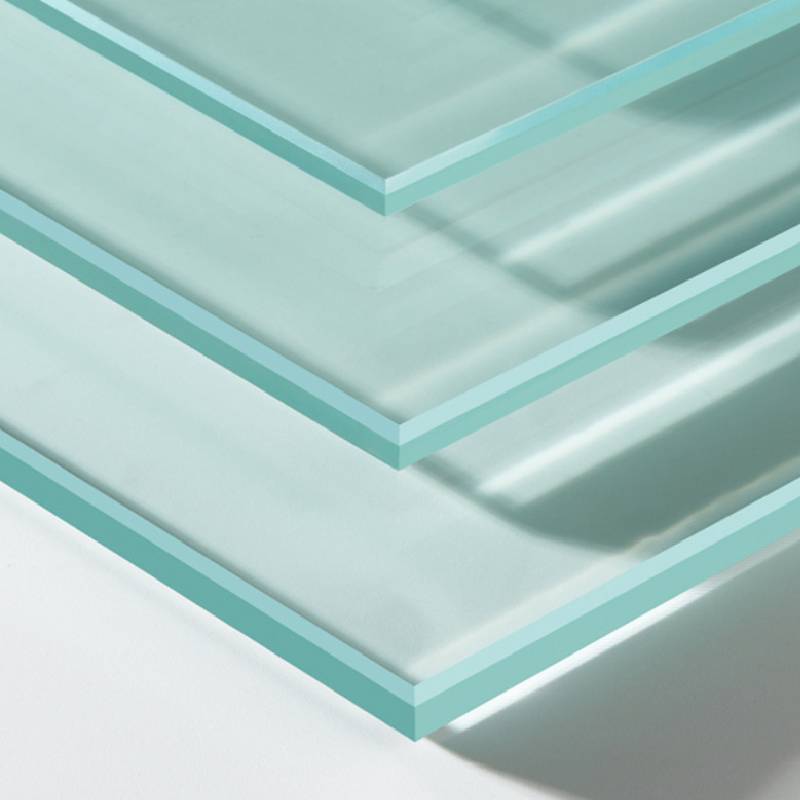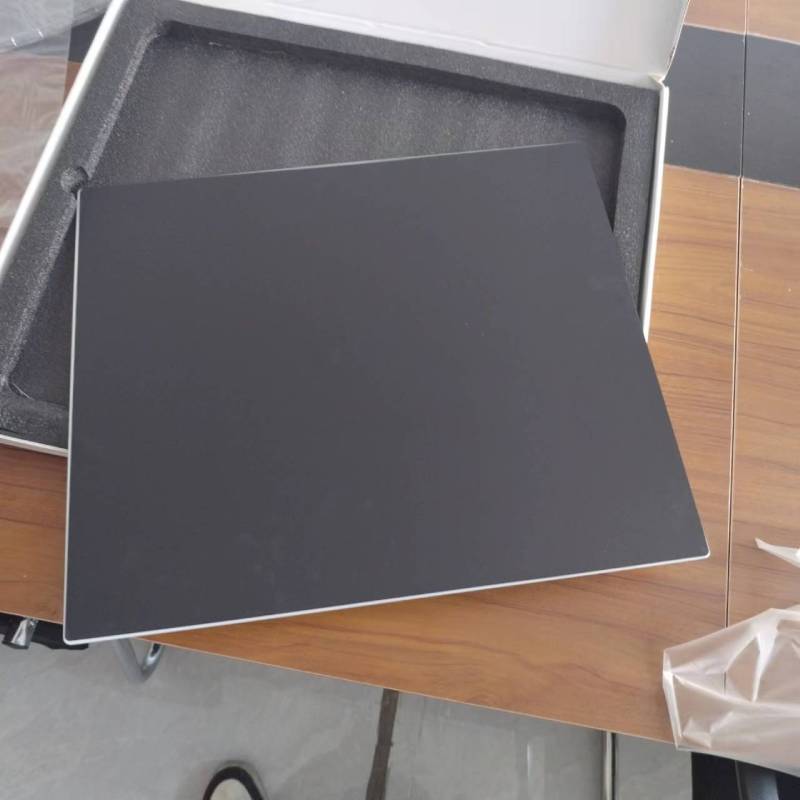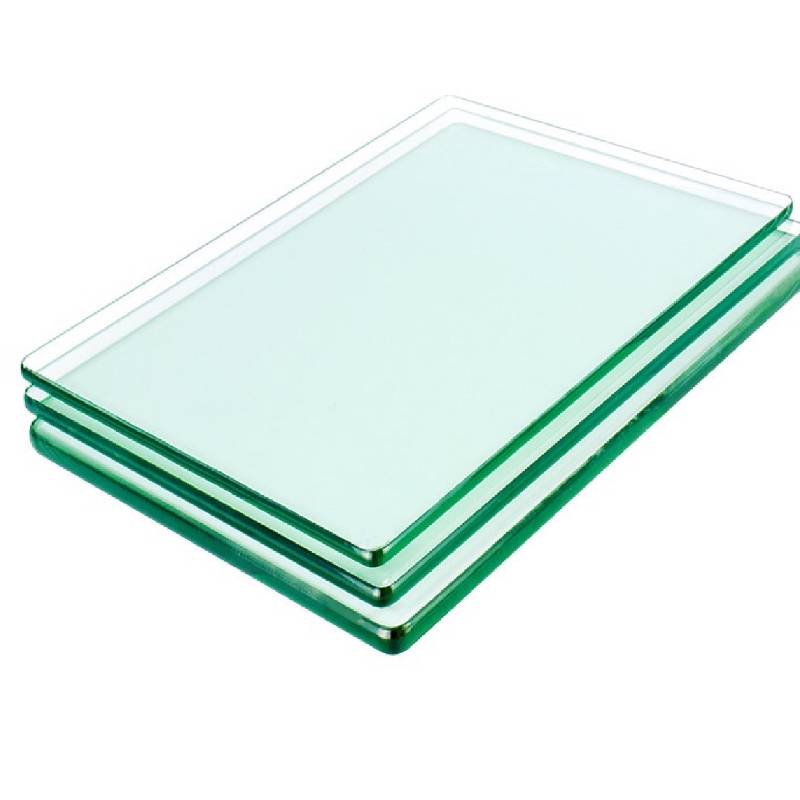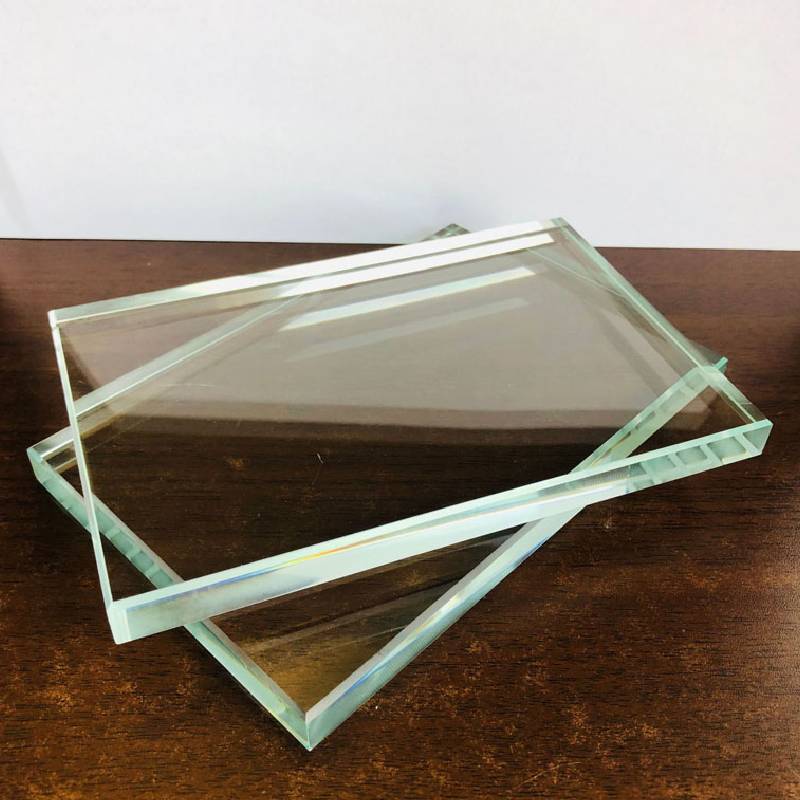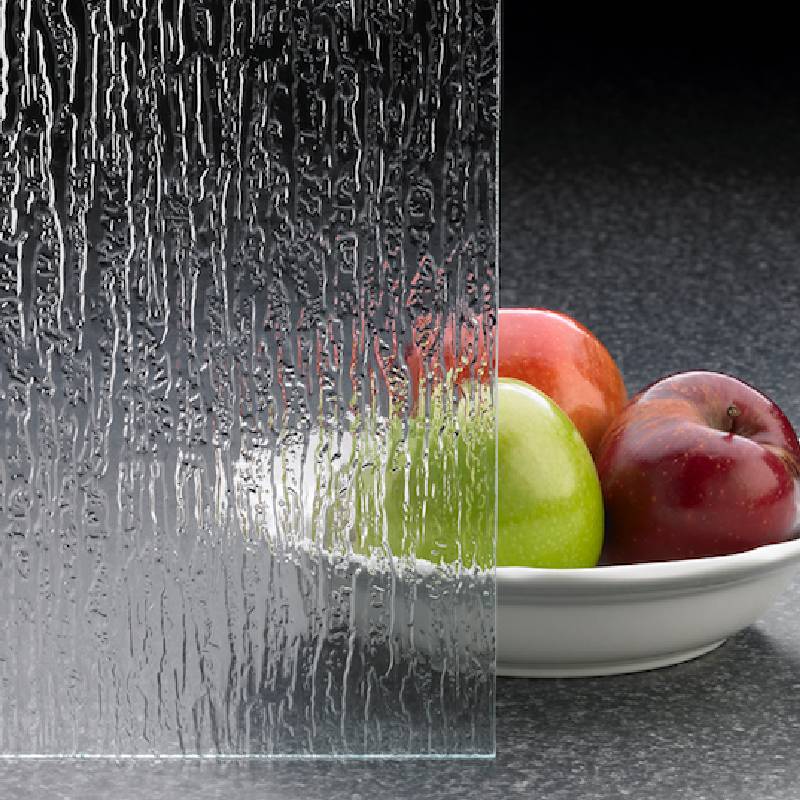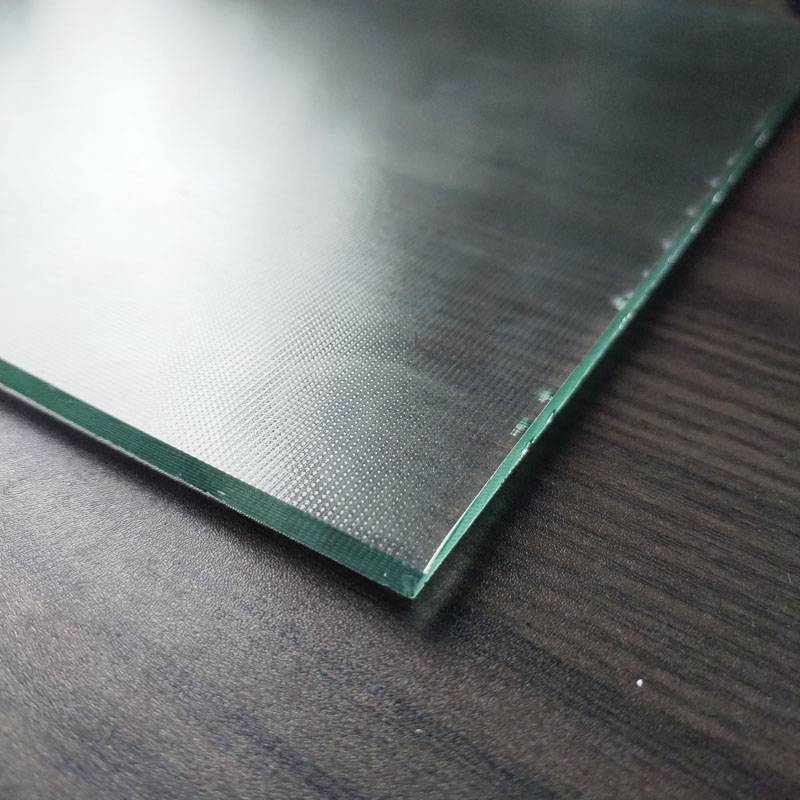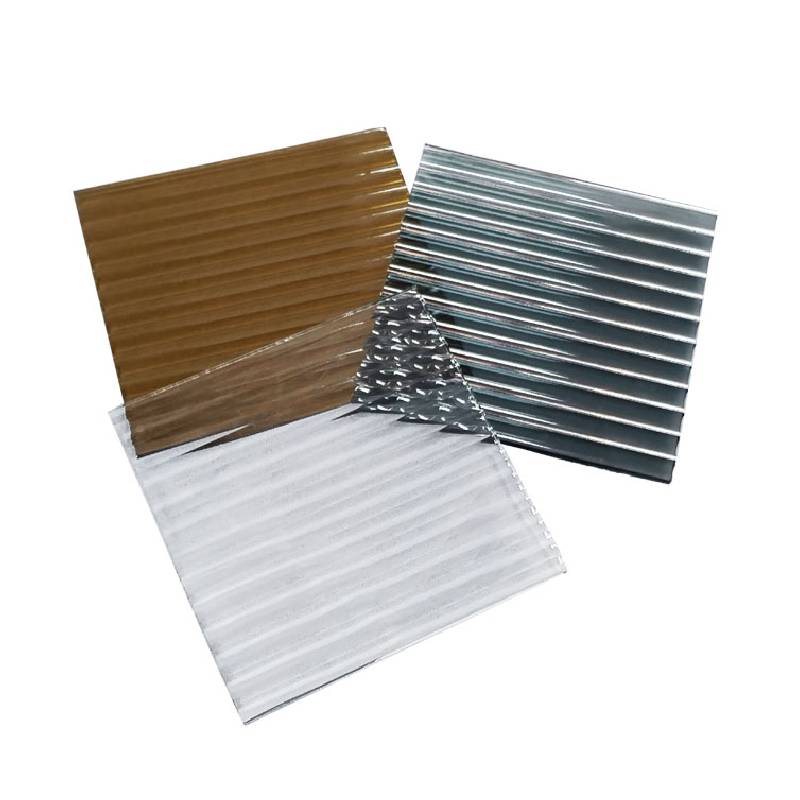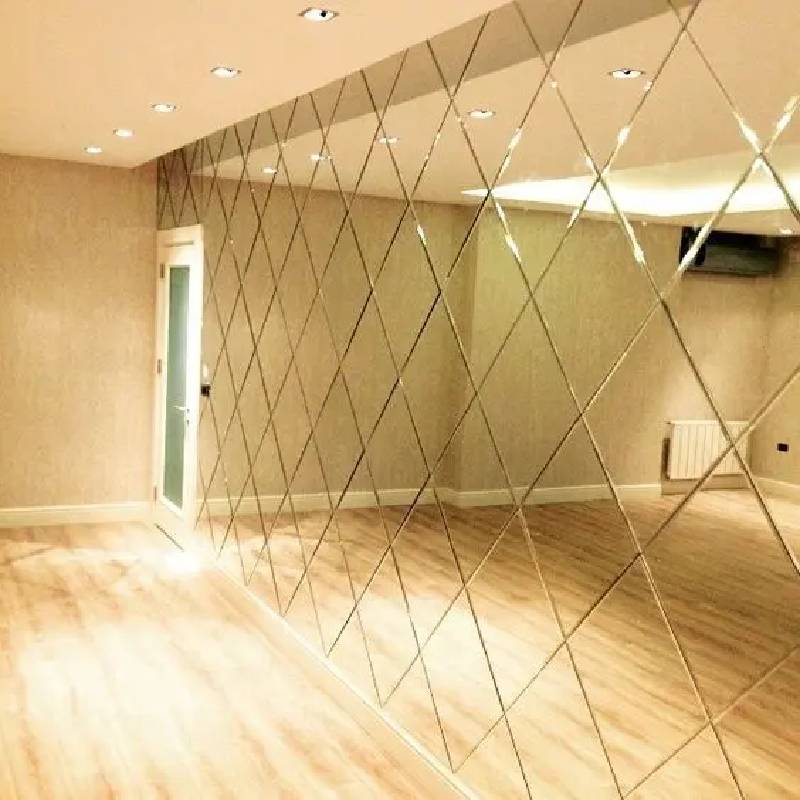Float glass means that the raw materials are melted at high temperature in the furnace. The molten glass continuously flows from the furnace and floats on the surface of the relatively dense tin liquid. Under the action of gravity and surface tension, the glass liquid spreads on the tin liquid surface. It is opened, flattened, and the upper and lower surfaces are formed to be smooth, hardened, and cooled before being led to the transition roller table. The rollers on the roller table rotate, pulling the glass ribbon out of the tin bath and into the annealing kiln. After annealing and cutting, flat glass products are obtained. The biggest feature of float glass is that its surface is hard, smooth, and flat. Especially when viewed from the side, the color is different from ordinary glass. It is white and the object is not distorted after reflection. In addition, due to the relatively good thickness uniformity, the transparency of its products is also relatively strong. It is precisely because of this transparency that it has a wider field of view. The broad field of view allows float glass to be used in many fields.
The production process of float glass is completed in a tin bath where protective gas (N2 and H2) is introduced. Molten glass continuously flows from the tank kiln and floats on the surface of the relatively dense tin liquid. Under the action of gravity and surface tension, the molten glass spreads and flattens on the tin liquid surface, forming an upper and lower surface that is smooth, hardened, and cooled. Then he was led to the transition roller table. The rollers on the roller table rotate, pulling the glass ribbon out of the tin bath and into the annealing kiln. After annealing and cutting, flat glass products are obtained. Compared with other forming methods, the advantages of float method are: it is suitable for high-efficiency manufacturing of high-quality flat glass, such as no corrugation, uniform thickness, smooth upper and lower surfaces, and parallel to each other; the scale of the production line is not limited by the forming method, and the energy per unit product Low consumption; high utilization rate of finished products; easy to scientifically manage and realize full-line mechanization and automation, high labor productivity; continuous operation cycle can last for several years, which is conducive to stable production; can provide suitable conditions for online production of some new varieties, such as Electric float reflective glass, spray film glass during annealing, cold end surface treatment, etc.
Float glass is widely used and is divided into tinted glass, float silver mirror, float white glass, etc. Among them, ultra-white float glass has a wide range of uses and broad market prospects. It is mainly used in the fields of high-end buildings, high-end glass processing and solar photovoltaic curtain walls, as well as high-end glass furniture, decorative glass, imitation crystal products, lighting glass, precision electronics industries, Special buildings, etc. Float glass has relatively good thickness uniformity and relatively strong transparency. Therefore, after tin surface treatment, it is relatively smooth. Under the action of smoothing, flame and polishing, it forms a surface that is relatively neat and flat. Glass with better strength and stronger optical properties. This kind of float glass has the characteristics of good transparency, brightness, purity, and bright indoor light. It is also the best choice for building doors, windows, and natural lighting materials. It is also one of the most widely used building materials. one.
The history of float glass can be traced back to the late 1950s. The British Pilkington Glass Company announced to the world that it had successfully developed the float forming process for flat glass. This was a revolution in the original grooved top forming process. However, the Western technology blockade at that time made China's float glass development and production have to take the path of self-reliance and independent innovation. In May 1971, the former Ministry of Building Materials Industry decided to conduct float process industrial trials in Luobo. Glass experts from all over the country gathered in Luobo, and more than a thousand employees of Luobo participated in the war. On September 23, 1971, under the guidance of department leaders and relevant experts, and with the full cooperation of fraternal units, the cadres and workers of Luoyang University worked together for more than three months and finally successfully built the first float. The glass production line produced my country's first float glass. From 1971 to 1981, CLFG implemented large-scale technical transformation on this line three times. The melting capacity of the production line reached 225 tons, the plate width exceeded 2 meters, and the overall yield reached 76.96%. At the end of 1978, In early 1979, thinner 4 mm glass was stably produced. The technology and equipment of "Luoyang Float Glass Process" were also improved day by day, and the technical level was continuously improved.
Keunggulan kaca apung terutama tercermin pada aspek berikut: pertama, memiliki kerataan yang baik dan tidak ada riak air; kedua, pasir kuarsa bijih yang dipilih memiliki bahan baku yang baik; ketiga, kaca yang dihasilkan murni dan memiliki transparansi yang baik; terakhir, strukturnya Kompak, berat, halus saat disentuh, lebih berat dari pelat datar per meter persegi dengan ketebalan yang sama, mudah dipotong dan tidak mudah pecah. Keunggulan tersebut membuat kaca apung banyak digunakan dalam konstruksi, otomotif, dekorasi, furnitur, teknologi industri informasi dan industri lainnya.
- Ketebalan kaca apung
Ketebalan biasa 3mm, 4mm, 5.5mm, 6mm, 8mm, 10mm, 12mm
Sangat tipis 1.2mm, 1.3mm, 1.5mm, 1.8mm, 2mm, 2.3mm, 2.5mm
Ekstra tebal 15mm, 19mm
Ukuran 1220*1830mm, 915*2440mm, 915*1220mm, 1524*3300mm, 2140*3300mm, 2140*3660mm, 2250*3300mm, 2440*3660mm
 Afrika
Afrika  bahasa Albania
bahasa Albania  Amharik
Amharik  Arab
Arab  orang Armenia
orang Armenia  Azerbaijan
Azerbaijan  Basque
Basque  Belarusia
Belarusia  Benggala
Benggala  Bosnia
Bosnia  Bulgaria
Bulgaria  Katalan
Katalan  Cebuano
Cebuano  Korsika
Korsika  Kroasia
Kroasia  Ceko
Ceko  Orang Denmark
Orang Denmark  Belanda
Belanda  Bahasa inggris
Bahasa inggris  Esperanto
Esperanto  Estonia
Estonia  Finlandia
Finlandia  Perancis
Perancis  Frisian
Frisian  Galisia
Galisia  orang Georgia
orang Georgia  Jerman
Jerman  Orang yunani
Orang yunani  Gujarati
Gujarati  Kreol Haiti
Kreol Haiti  hausa
hausa  Hawaii
Hawaii  Ibrani
Ibrani  Tidak
Tidak  Miao
Miao  Hongaria
Hongaria  Islandia
Islandia  igbo
igbo  bahasa Indonesia
bahasa Indonesia  orang Irlandia
orang Irlandia  Italia
Italia  Jepang
Jepang  Jawa
Jawa  Kannada
Kannada  kazakh
kazakh  Khmer
Khmer  Rwanda
Rwanda  Korea
Korea  Kurdi
Kurdi  Kirgistan
Kirgistan  TBC
TBC  Latin
Latin  Latvia
Latvia  Lithuania
Lithuania  Luksemburg
Luksemburg  Makedonia
Makedonia  Malgashi
Malgashi  Melayu
Melayu  Malayalam
Malayalam  Malta
Malta  Maori
Maori  Marathi
Marathi  Mongolia
Mongolia  Myanmar
Myanmar  Nepal
Nepal  Norwegia
Norwegia  Norwegia
Norwegia  orang oksitan
orang oksitan  Pashto
Pashto  Orang Persia
Orang Persia  Polandia
Polandia  Portugis
Portugis  Punjabi
Punjabi  Rumania
Rumania  Rusia
Rusia  Samoa
Samoa  Gaelik Skotlandia
Gaelik Skotlandia  Orang Serbia
Orang Serbia  Bahasa inggris
Bahasa inggris  Shona
Shona  Sindhi
Sindhi  Sinhala
Sinhala  Orang Slovakia
Orang Slovakia  Slovenia
Slovenia  Somalia
Somalia  Orang Spanyol
Orang Spanyol  Sunda
Sunda  Swahili
Swahili  Orang Swedia
Orang Swedia  Tagalog
Tagalog  Tajik
Tajik  Tamil
Tamil  Tatar
Tatar  Telugu
Telugu  Thai
Thai  Turki
Turki  orang Turkmenistan
orang Turkmenistan  Orang Ukraina
Orang Ukraina  Urdu
Urdu  Uighur
Uighur  Uzbekistan
Uzbekistan  Orang Vietnam
Orang Vietnam  Welsh
Welsh  Membantu
Membantu  Yiddi
Yiddi  Yoruba
Yoruba  Zulu
Zulu 

